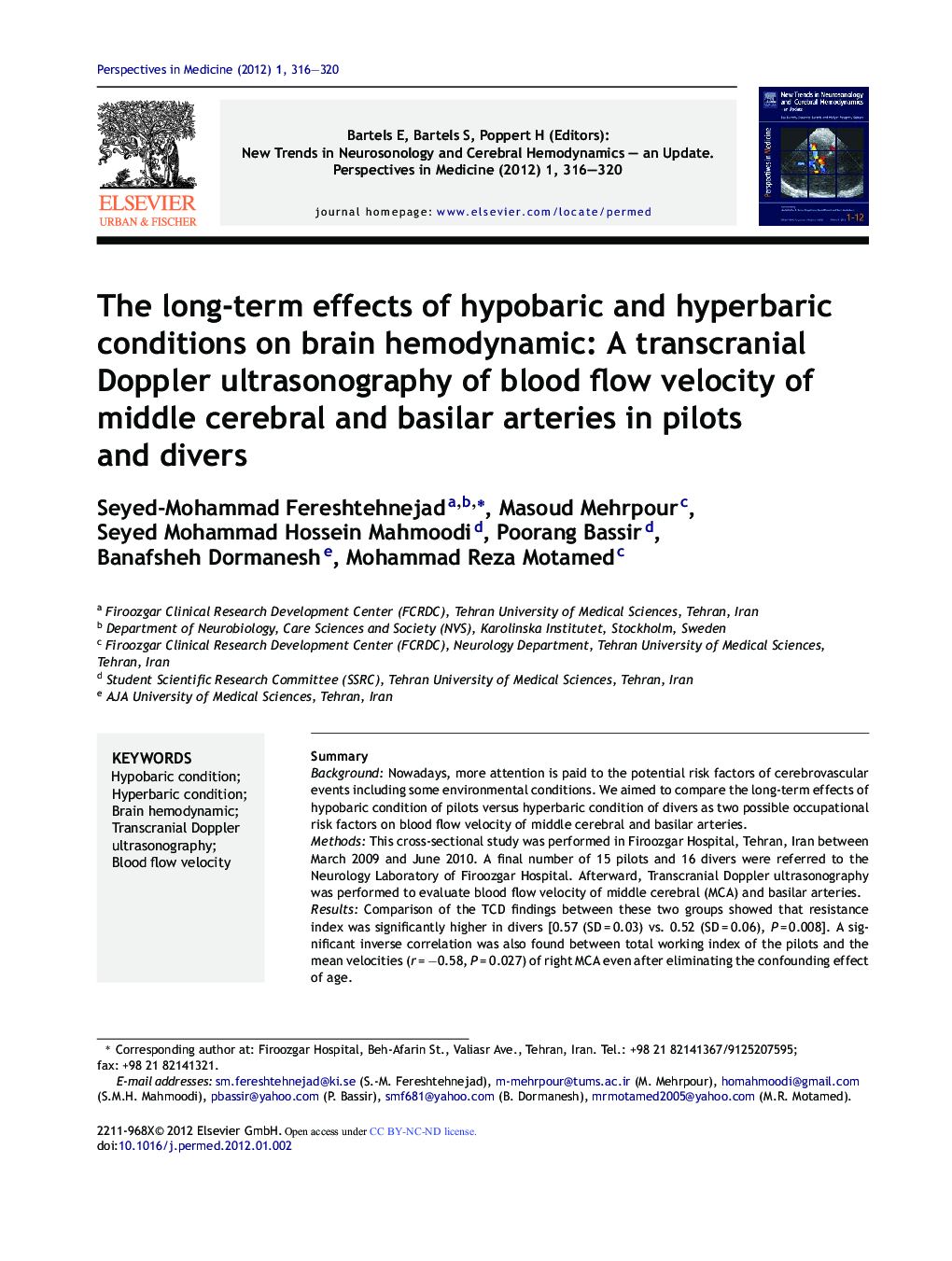| Article ID | Journal | Published Year | Pages | File Type |
|---|---|---|---|---|
| 331836 | Perspectives in Medicine | 2012 | 5 Pages |
SummaryBackgroundNowadays, more attention is paid to the potential risk factors of cerebrovascular events including some environmental conditions. We aimed to compare the long-term effects of hypobaric condition of pilots versus hyperbaric condition of divers as two possible occupational risk factors on blood flow velocity of middle cerebral and basilar arteries.MethodsThis cross-sectional study was performed in Firoozgar Hospital, Tehran, Iran between March 2009 and June 2010. A final number of 15 pilots and 16 divers were referred to the Neurology Laboratory of Firoozgar Hospital. Afterward, Transcranial Doppler ultrasonography was performed to evaluate blood flow velocity of middle cerebral (MCA) and basilar arteries.ResultsComparison of the TCD findings between these two groups showed that resistance index was significantly higher in divers [0.57 (SD = 0.03) vs. 0.52 (SD = 0.06), P = 0.008]. A significant inverse correlation was also found between total working index of the pilots and the mean velocities (r = −0.58, P = 0.027) of right MCA even after eliminating the confounding effect of age.ConclusionIn our report, some considerable associations were found especially with regard to the long-term effects of hyperbaric condition of divers on blood flow velocity of middle cerebral and basilar arteries using Transcranial Doppler ultrasonography. Chronic exposure to the hyperbaric condition of diving seems to have some probable effects on brain hemodynamics in the long-term which are in favor of decreasing blood flow and increasing of RI and PI.
